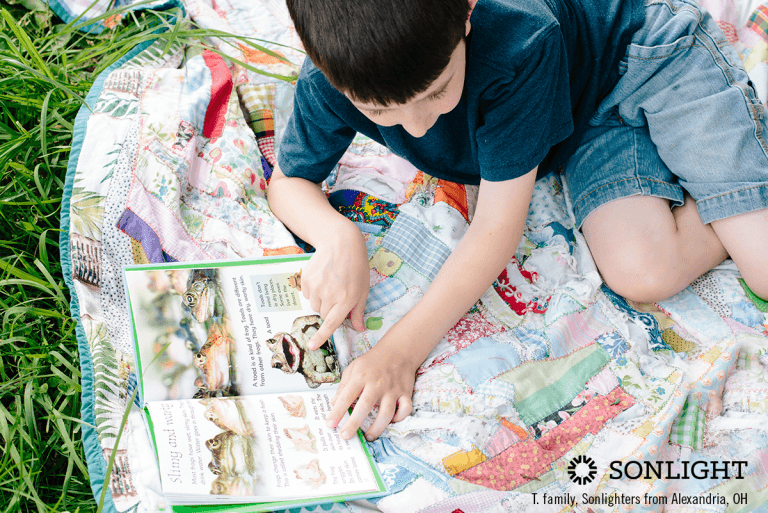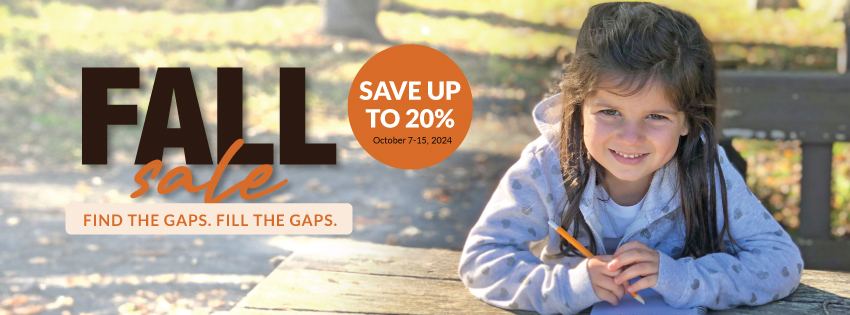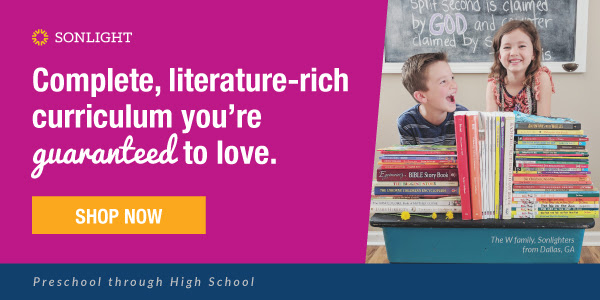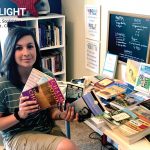Assessing your child doesn’t have to be complicated. My favorite motto for just about everything homeschool related is “Keep It Simple!” So, keep that in mind as you read through this list, and remember there are several different ways to assess. Choose the way that fits your schedule, your style, your child, and your curriculum. Let’s get started.

1. Assess and Document Learning with a Checklist
Oh yes! It can be this easy! Particularly in the preschool and kindergarten years, a simple checklist is a perfect way to check off goals as your child meets them. If you really want to be official, add the date that your child mastered the goal.
I’ve even used the Sonlight Instructor’s Guide as my checklist in the early years. I just checked off each box that we completed and wrote in pencil on the back of the Instructor’s guide any notes about my child’s progress. When I use the same IG with the next child, I either use a different color pen or put their initials in front of my note.
2. Assess and Document Learning with a Rubric
Especially for writing, rubrics can be a life saver. A rubric places an assessment into categories. For example, if I’m grading a writing piece, there might be three areas where we’ve really focused our attention and I’m wanting to see some progress. For example, let's say we were working on these three categories: content, mechanics, and language usage. In each category, I would use my performance based scale (Exemplary, Proficient, Basic, and Below Basic) to assign a grade to each category. Then, I have a clear picture of what we nailed and what we still need to work on.
Rubrics can be used in any subject, however. The new and improved Sonlight Instructor’s Guides feature several rubrics for assessment purposes. It even has space for you to record the grade right there in the guide if you choose. I love to keep things simple, so I will often write a quick rubric on the back of my child’s paper. It doesn’t take long at all, and it’s an easy, effective way to assess and document your child’s learning.
It’s always a good idea to give your child the rubric ahead of time so that they know what is expected of them.
3. Assess and Document Learning with Booklists and Reading Journals
For reading, it can be difficult to keep documentation of all the great pieces of children’s literature that you and your children have gotten lost in. Let’s just be honest for a bit. There’s no way to extensively document all the great discussion, growth, and character development that comes from reading great books, but may want to try, right?
A booklist and reading journal are a great way to do just that. It doesn’t have to be anything special; my kids like to take a cheap spiral notebook and make it their own by adding stickers and doodles. Each time you read a book together or your child reads a book on their own, have them write the title of the book and the author, and then copy anything from the book that moves them or just makes them think.
As they get older, they can begin recording their thoughts and feelings about these excerpts. This shows higher level thinking while reading and is an excellent way to document learning through living books. In my opinion, there is no better way to learn.
For more information on reading journals, I recommend Read Aloud Revivial. And the Sonlight Memory Book has pages especially designed for book logs.
4. Assess and Document Learning with Narration
All my Charlotte Mason mamas, rejoice! Yes, narration is a legitimate method of assessing your child’s comprehension! And narration is a hallmark of the Sonlight approach.
During or after reading a book, have your child tell you about their book. After they give you a simple summary, ask a few deep thinking questions:
- “What do you think about this character’s choice?”
- “What would you do in this situation? Why do you think you would have chosen a different path from this character?”
- "What do you predict will happen next?"
Documenting narrations can be tricky, but a simple handwritten record of the discussion along with your child’s reading journals should suffice.

5. Assess and Document Learning with Standardized Testing
Oh, the conflict that arises deep within me when I say the words, standardized testing. I can only imagine that it arises in you, too. After all, we homeschoolers tend to go against the grain. Why would we want our children compared to a certain standard? This is the conflict that churns inside me. However, I have used standardized testing as a simple tool to see where my children are compared to their peers. We don’t discuss their scores (good or bad; behind or on grade level), and they honestly never think about it again after that envelope is sent off.
I have found that standardized testing is helpful to an extent. Standardized testing can help me pinpoint very specific areas that need work. I personally don’t believe that it’s necessary to do every year if it’s not required in your state, but I think that it can be helpful when kept in a healthy perspective.
6. Assess and Document Learning with Chapter/Unit Tests
These are the most common tests, as these are the type of tests most of us grew up taking. These are the tests at the end of the lesson in the math books. These are helpful to know if your child truly grasped the concepts that you’ve been presenting or if they need a little more work, or occasionally, a lot more work! I find these assessments helpful particularly in math.
7. Assess and Document Learning with Projects
Sometimes, documenting learning is a little tougher. I find that it’s particularly difficult to formally assess my children’s knowledge of history. For subjects like this, we use projects. Sometimes, it’s a compare/contrast essay. Sometimes, it’s a collage of the culture we’ve been studying. We’ve made dioramas of trench warfare and ecosystems and propaganda posters. The sky's the limit when you assess through projects. This is a fun way to assess as you can get creative. If you feel the need to assign a formal grade to a project, a rubric is a great way to do just that.
8. Assess and Document Learning with Drills
Geography, art, music, Bible, and timelines all make for great drill assessments. I like to randomly hand out blank maps to my kids. They fill them in as best as they can without looking at a labeled map. When they’ve exhausted their memory, they count up how many countries, rivers, oceans, and gulfs that they correctly labeled. The great thing about this method is the intrinsic motivation. Even my least competitive child tries to beat their previous score.
Timed or untimed drills can apply to many other subjects besides geography.
- Hand your kids a blank timeline and see how many dates they can fill in.
- Hand them timeline figures and see how fast they can arrange them in chronological order.
- Have them do an old school Bible drill and see how many books of the Bible they can name. Can they list the disciples?
- Hand them art postcards and see if they can group the art by different artists or movements.
If you feel a need to assign a formal grade, set a goal of how many items you want to be completed and let your child know the expectation. From there, use your chosen grading scale.
Assessing your child can be easy. And keeping up with them is even simpler. All of their assessments go into a large three-ring binder that I call their Homeschool Portfolio. If anyone ever wants to see a record of my child’s learning, I can simply hand them the binder, and say with confidence, “Take your time!”
Take advantage of our 100% guarantee. No other homeschooling company can match our Love to Learn, Love to Teach™ promise. You can order with confidence that either you will have a great year, or you will get a full refund.








